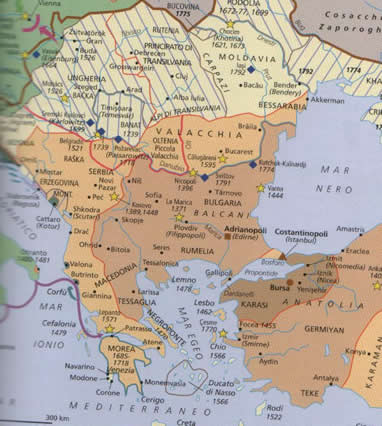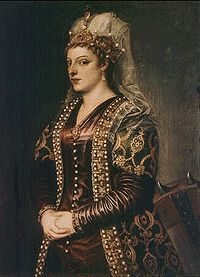The Islamic Osmanli Turks began to arrive from the highlands of Armenia in the mid 13th Century and settled in Anatolia, where, under the guidance of Othman I, they conquered Asia Minor.
In 1453, under the leadership of Mohammed II (1451-1488) the Turks took possession of Constantinople, making it their capital and putting an end to the Eastern Roman Empire.
Just one year later the Venetians managed to get their colony in Constantinople recognised, but the Bailo had lost his powers as a governor of the Venetian Republic and was transformed into a mere ambassador at the Sultan’s court.
The Turks continued their conquests in Greece and the Balkans.
Venice and Hungary, encouraged by Pope Pius II and finally allies, organised a war against the Turks under the pretext of bringing aid to Skanderbeg , head of the Albanian resistance. The Venice did not succeed in its enterprise and the peace treaty which sanctioned the end of the conflict led to great losses: Venice lost its base of Negroponte, had to acknowledge the Turk’s presence in Albania and the Aegean and had to pay a regular cash tribute to the Government of the Ottoman Empire, called the “Sublime Porta”.
In 1480 the Turks also tried to seize the coasts of Puglia, gaining the port of Otranto, but then lost these gains with the death of Mohammed II.
On 11th June 1488, Venice officially annexed the island of Cyprus. The gift of Queen Caterina Cornaro , Cyprus was a strategic base for trade in the Mediterranean and an important centre for the production of sugar, salt and fine wines.





